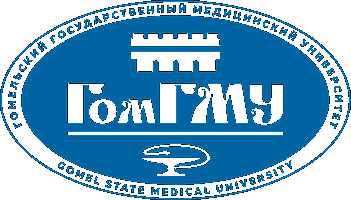Показать сокращенную информацию
Cathepsin L-induced galectin-1 may act as a proangiogenic factor in the metastasis of high-grade serous carcinoma
| dc.contributor.author | Pranjol, M.Z.I. | |
| dc.contributor.author | Zinovkin, D. A. | |
| dc.contributor.author | Maskell, A.R.T. | |
| dc.contributor.author | Stephens, L. J. | |
| dc.contributor.author | Achinovich, S. L. | |
| dc.contributor.author | Los’, D. M. | |
| dc.contributor.author | Nadyrov, E. A. | |
| dc.contributor.author | Hannemann, M. | |
| dc.contributor.author | Gutowski, N. J. | |
| dc.contributor.author | Whatmore, J. L. | |
| dc.date.accessioned | 2020-09-03T07:21:22Z | |
| dc.date.available | 2020-09-03T07:21:22Z | |
| dc.date.issued | 2019 | |
| dc.identifier.citation | Cathepsin L-induced galectin-1 may act as a proangiogenic factor in the metastasis of high-grade serous carcinoma / MZI. Pranjol, D.A. Zinovkin , A.R. T. Maskell , L.J. Stephens, S. L. Achinovich , D. M. Los’, E. A. Nadyrov , M. Hannemann, N. J. Gutowski, J. L. Whatmore // Journal of Translational Medicine. – 2019. – Vol.17. – P. 216. | ru_RU |
| dc.identifier.uri | https://elib.gsmu.by/handle/GomSMU/7182 | |
| dc.description.abstract | Background: New treatment options for metastasised high-grade serous carcinoma (HGSC) are urgently needed. HGSC frequently metastasises to the omentum, inducing angiogenesis in the local omental microvasculature to facilitate tumour growth. We previously showed that HGSC-secreted cathepsin L (CathL) induces pro-angiogenic changes in disease relevant human omental microvascular endothelial cells (HOMECs), suggesting a role in tumour angiogenesis. Here we investigate whether CathL acts by inducing local production of the carbohydrate-binding protein galectin-1 (Gal1), which has been reported to be involved in tumourigenesis in other tumours. Methods: HOMECs were used for all experiments. Gal1 mRNA and protein levels were measured by RT-PCR and ELISA respectively. Gal1-induced cell proliferation was assessed using WST-1 assay, migration using a transwell assay and in vivo Gal1 expression by immunohistochemistry. Results: CathL transcriptionally regulated HOMEC production and secretion of Gal1 via activation of NF kappa B (significantly inhibited by sulfasalazine). Gal1 significantly enhanced HOMEC migration (p < 0.001) and proliferation (p < 0.001), suggesting an autocrine action. The latter was significantly reduced by the MEK/ERK1/2 inhibitors U0126 and PD98059 suggesting downstream activation of this pathway. Immunohistochemical analysis of omenta from HGSC patients with or without metastatic disease demonstrated a positive correlation between Gal1 expression and number of microvessels (r = 0.8702, p < 0.001), and area of vessels (r = 0.7283, p < 0.001), supporting a proangiogenic role for Gal1 in omental metastases. Conclusion: HOMEC Gal1 transcription and release in response to CathL secreted from metastasising HGSC acts in an autocrine manner on the local microvasculature to induce pro-angiogenic changes, highlighting a potential new therapeutic target. | ru_RU |
| dc.language.iso | en | ru_RU |
| dc.publisher | Journal of Translational Medicine | ru_RU |
| dc.subject | galectin-1 | ru_RU |
| dc.subject | angiogenesis | ru_RU |
| dc.subject | metastasis | ru_RU |
| dc.subject | high-grade serous carcinoma | ru_RU |
| dc.subject | signalling pathways | ru_RU |
| dc.title | Cathepsin L-induced galectin-1 may act as a proangiogenic factor in the metastasis of high-grade serous carcinoma | ru_RU |
| dc.type | Article | ru_RU |
Файлы данного ресурса
Данный элемент включен в следующие коллекции
-
2019 [97]
